Best Places to Visit in Nevada

On my recent four week road trip through Nevada, I was reminded of the coolness of Las Vegas (of course!) but also that the state offers so much more than casinos and neon lights. I re-visited my favorite destinations in April and discovered new hidden gems that make Nevada an unforgettable place to visit year round. I broke this post into two major sections with things to see near Las Vegas and things to do near Lake Tahoe and Reno. Here are the places I recommend, and I think you’ll enjoy them too.
Places to Visit Near Las Vegas
I'm starting with best places to visit near Las Vegas, Nevada because most visitors start their trip here. But if you are driving from Northern California, then skip to my section on the best places to visit near Reno and Lake Tahoe.

1. Las Vegas
Las Vegas is easily one of my favorite places to visit in Nevada, and every time I go it feels like a vibrant dream in the middle of the desert. Chances are that unless you are driving in from a neighboring state, you will land at Las Vegas airport like I did so plan a two day stay here first.
If this is your fist trip, Las Vegas is alive with lights, energy, and the coolest mix of history, food, and entertainment that completely won me over.
One of the most amazing gems I found was the Neon Museum near Downtown. Walking through the glowing collection of vintage casino and motel signs felt unusual, exciting, and completely magical. It’s underrated compared to the Strip, but to me it’s one of the absolute best places to really feel the history of Vegas.
For breakfast, I made my way to EAT, close to Fremont Street, and it was the perfect start to my day. The food was fresh, affordable, and joyful, and the relaxed atmosphere made it one of the coolest breakfast spots I’ve ever been to. It quickly became one of my favorite stops in the city.
I also loved exploring the Burlesque Hall of Fame, near the Arts District. It was such a unique and exciting experience to see glamorous costumes, photos, and stories that celebrate an often underrated art form. It felt like stepping into a hidden side of Vegas that most people overlook.
The Mob Museum, also near Fremont Street, turned out to be one of the most spectacular museums I’ve ever visited. Immersive exhibits and dramatic stories of organized crime made it unforgettable. For me, combining these hidden gems with the dazzling lights of the Strip made my Las Vegas weekend getaway feel truly exceptional.
- Location: Map & Directions
Check prices at the Venetian where we had a cool four day stay with great Italian-inspired dining, 5-star Caesars Palace (my photo is below) or the Bellagio, another favorite of mine because of the dancing fountain show every 15-30 minute throughout the day.
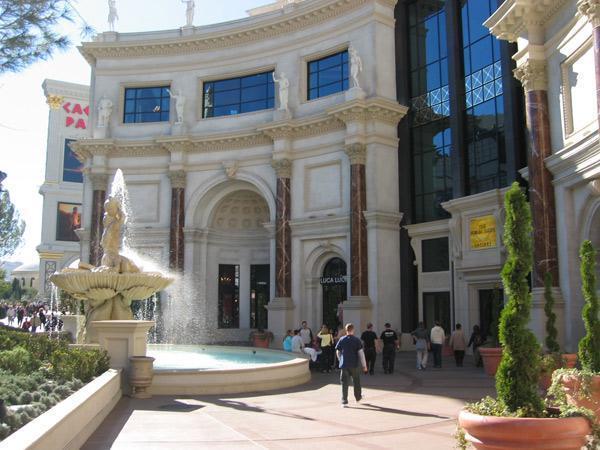
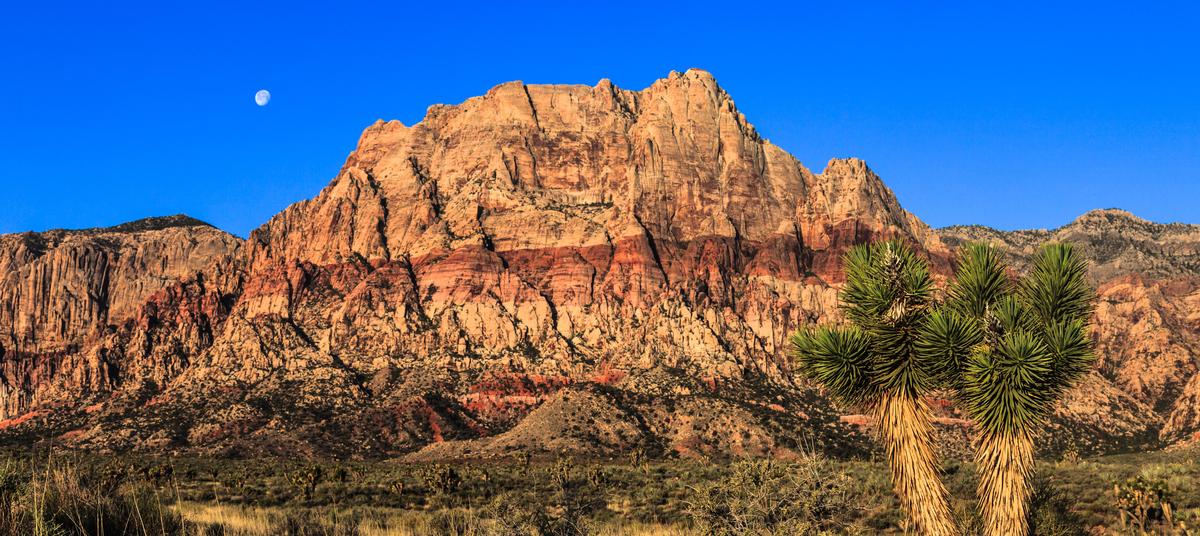
2. Red Rock Canyon
Red Rock Canyon has to be one of the absolute best places I’ve visited near Las Vegas, and it still amazes me every time I go on a day trip. Just a short drive west of the Strip, this spectacular spot feels like stepping into another world—one filled with desert magic and brilliant red sandstone cliffs that completely won me over.
We drove about 25 minutes west from Las Vegas (17 miles) to Red Rock Canyon (195,000 acres, $20/vehicle entry).
I loved starting my morning with the scenic drive that loops through the canyon. Every turn revealed unusual rock formations, hidden trails, and breathtaking views that felt like a dream. It’s one of my favorite drives in Nevada because it’s so affordable, easy, and packed with photo-worthy stops.
Hiking here was one of the coolest experiences I’ve ever had. Two trails that stood out for me were Calico Tanks and Ice Box Canyon. Why? Because they made me feel both adventurous and joyful, and I couldn’t get over how vibrant the desert colors looked in the sunlight. It’s an underrated outdoor gem that’s just minutes away from the excitement of Las Vegas.
I also thought it was amazing how much wildlife I spotted, such as desert bighorn sheep, lizards, and even a few unusual desert plants in bloom. It made the canyon feel alive and added a unique twist to the adventure. For me, that connection to nature was unforgettable.
- Location: Map & Directions
What I love most is that Red Rock Canyon can be both a peaceful family getaway and a romantic escape. Whether I was watching the sunset paint the cliffs with golden light or simply sitting on a rock to take in the view, it felt like one of Nevada’s most exceptional hidden treasures.
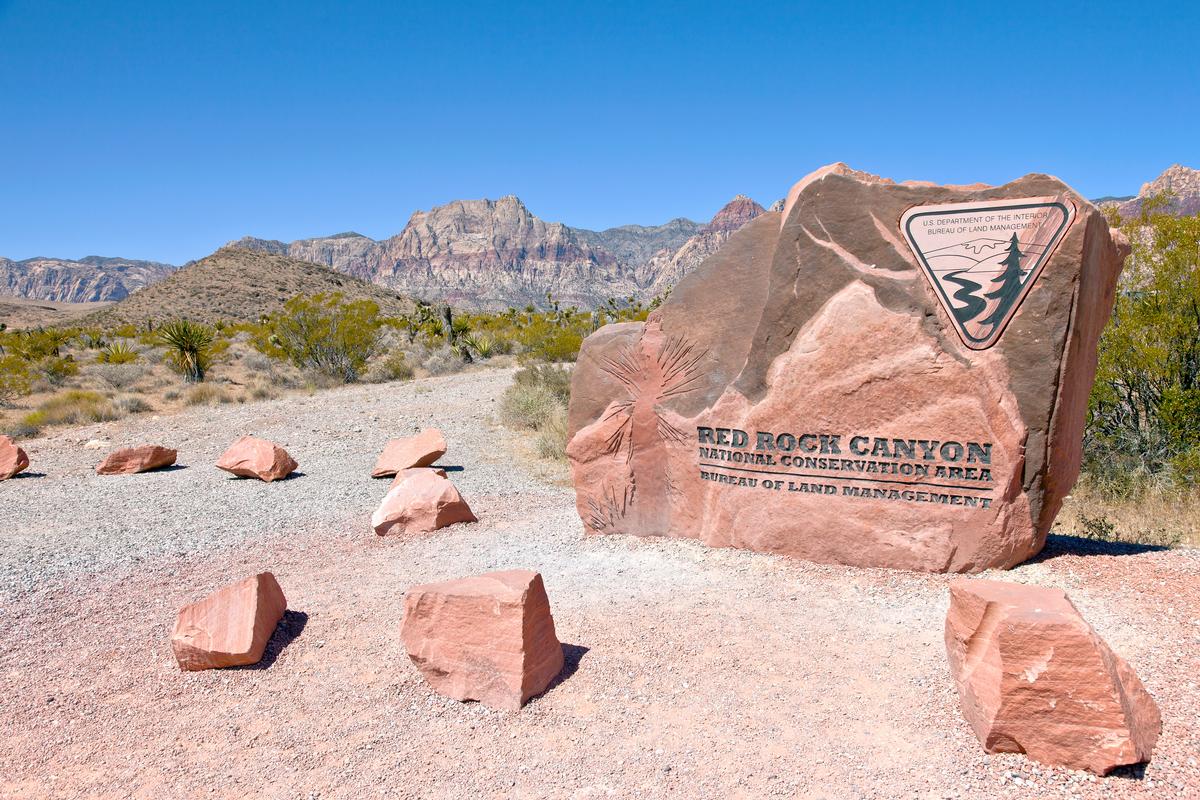
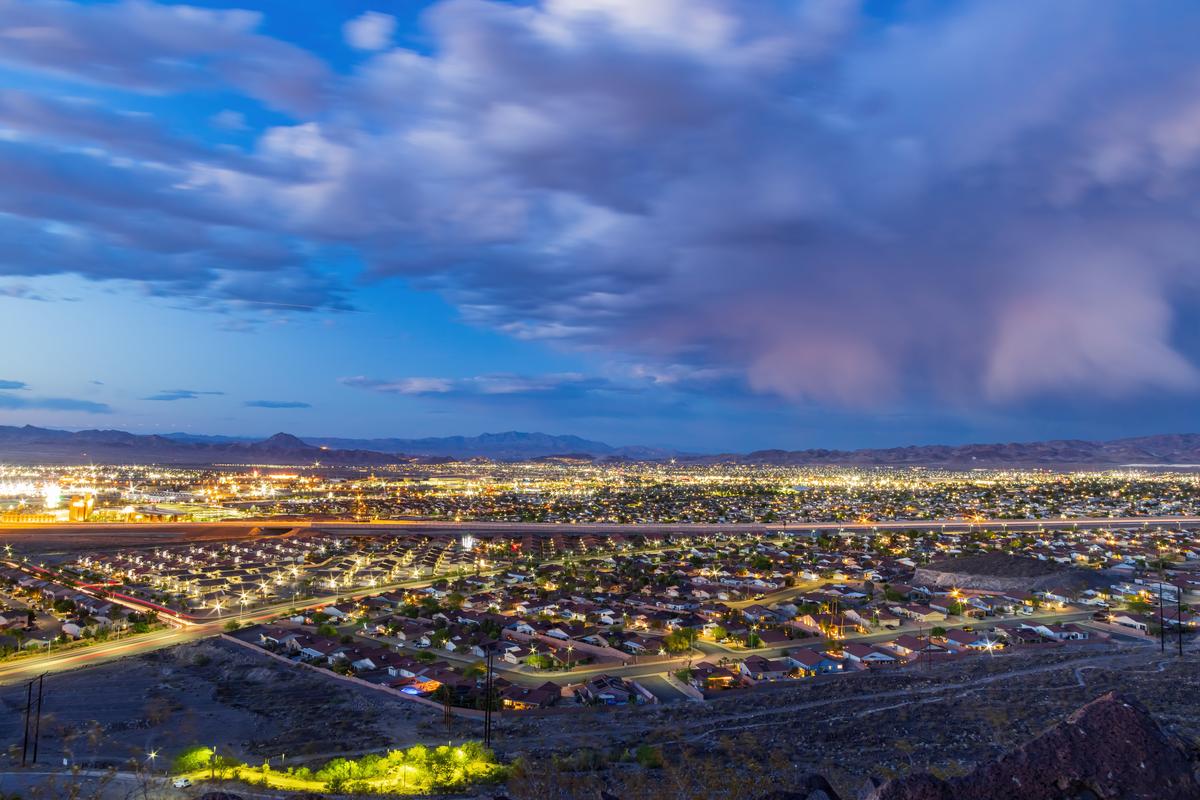
3. Henderson, Nevada
Henderson is one of my favorite underrated gems in Nevada, and I always think it’s one of the coolest places to explore just outside of Las Vegas. Only about 20 minutes from the Strip, it offers a more relaxed vibe while still giving me access to amazing food, outdoor adventures, and unique local culture.
Instead of driving, we caught a regional RTC bus from Las Vegas to Henderson ($2 each way, about 40 minutes) which was super convenient! We checked into 4-star Green Valley Ranch Resort Spa for two days.
One of the best surprises for me was how vibrant the food scene is in Henderson. Breakfast at local cafés in the Water Street District made for such a joyful start to the day, and I loved the mix of affordable eats and creative menus. It felt like a hidden foodie treasure tucked away near the desert mountains.
I also enjoyed exploring the Henderson Bird Viewing Preserve (see the photo below), which was an unusual but amazing experience. It recently won the title of "Best Place to Birdwatch" in KNPR's Best of the City 2024 awards and I completely agree! Watching colorful birds in a peaceful desert setting was so different from the usual Nevada vibe...it gave me a sense of calm that made the trip feel special. For families, it’s one of the absolute best activities.
The Lake Las Vegas area was another highlight for me. With its sparkling waterfront, romantic gondola rides, and resort-style atmosphere, it felt like a dream getaway. Whether I was kayaking, dining by the lake, or just walking along the village, the whole place felt spectacular and unique.
- Location: Map & Directions
What I love most about Henderson is how it blends adventure and relaxation. With Red Rock Canyon and Hoover Dam nearby (next up if you keep reading!), plus vibrant local gems right in town, Henderson became one of my favorite weekend destinations. It’s an exciting, cool, and truly exceptional spot that deserves more love.
Check prices at M Resort Spa Casino, a second great option for an overnight stay.
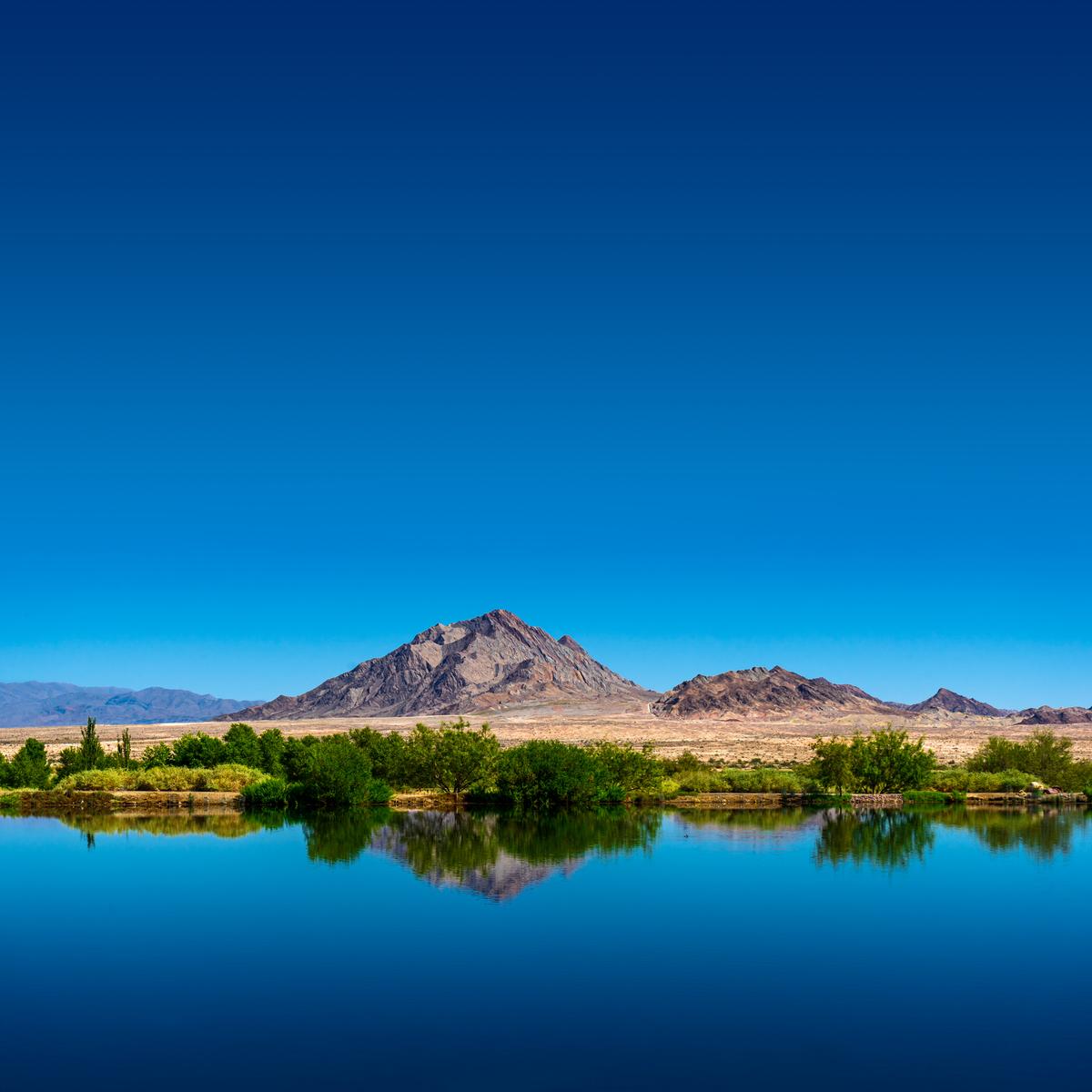
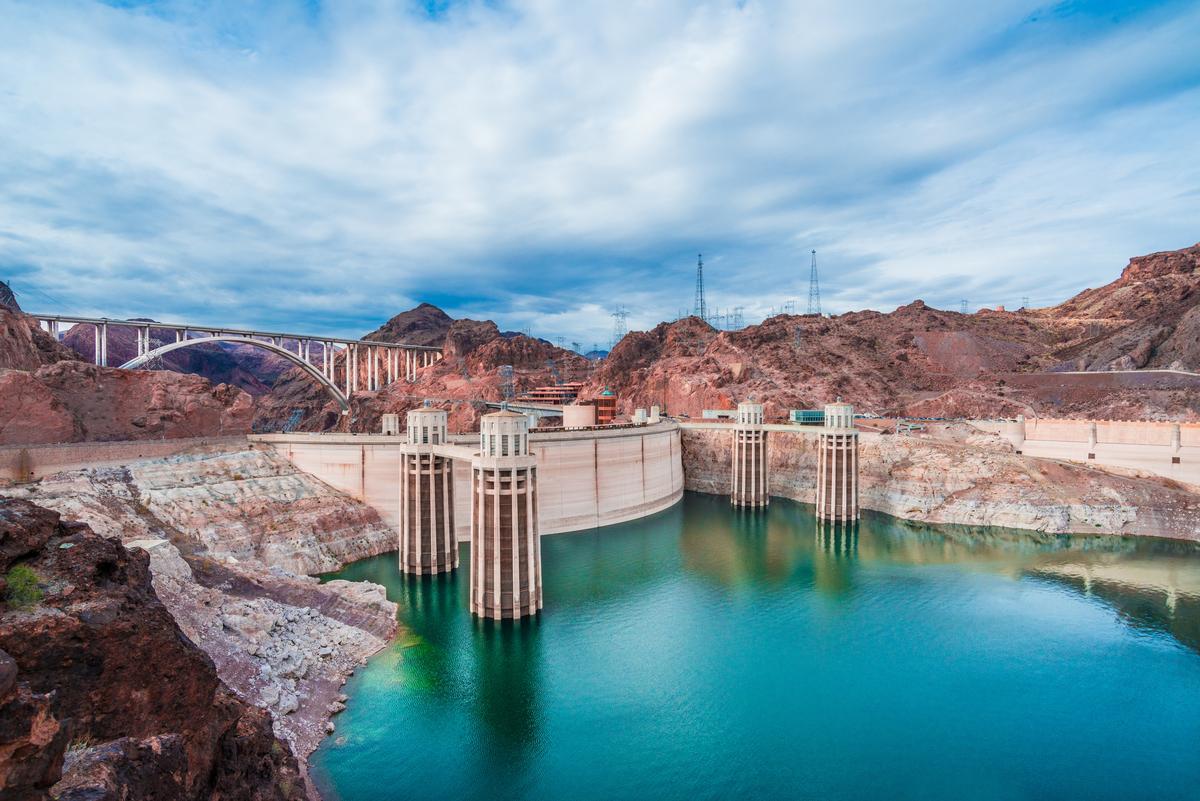
4. Boulder City and Hoover Dam
Boulder City feels like stepping into a quieter corner of the desert. Located just about 35 minutes from Las Vegas, it’s unusual because it’s one of the few towns in Nevada without casinos, which gives it a cool, relaxed atmosphere that feels refreshing and unique.
From Las Vegas, it was a 35-minute drive (26 miles) to Boulder City, a small town of about 15,000 that was built in the 1930s to house workers constructing the Hoover Dam.
You can walking down the historic streets of Boulder City , visit vintage shops, affordable cafés, and art galleries that create a joyful vibe that feels both local and welcoming. It’s one of those underrated towns where you can slow down and really enjoy the moment.
The absolute best part of visiting, though, is being so close to the spectacular Hoover Dam (photo below). Standing on top of this massive engineering wonder near the Colorado River is an unforgettable experience. I loved seeing the unusual Art Deco designs built into the dam—it felt both historic and futuristic at the same time.
I also took time to visit the Hoover Dam Museum in downtown Boulder City, which gave me a deeper look into the stories of the workers who built this dream project in the 1930s. It was both educational and inspiring, and to me it added so much meaning to the visit.
- Location: Map & Directions
For me, a trip to Boulder City and Hoover Dam makes for the perfect weekend getaway. Whether it’s a romantic stroll through town, a family adventure learning about history, or simply watching the sun set over Lake Mead, this area is one of Nevada’s most exceptional and unforgettable treasures.
Check prices at 2-star Boulder Dam Hotel for a two day stay and explore the area.
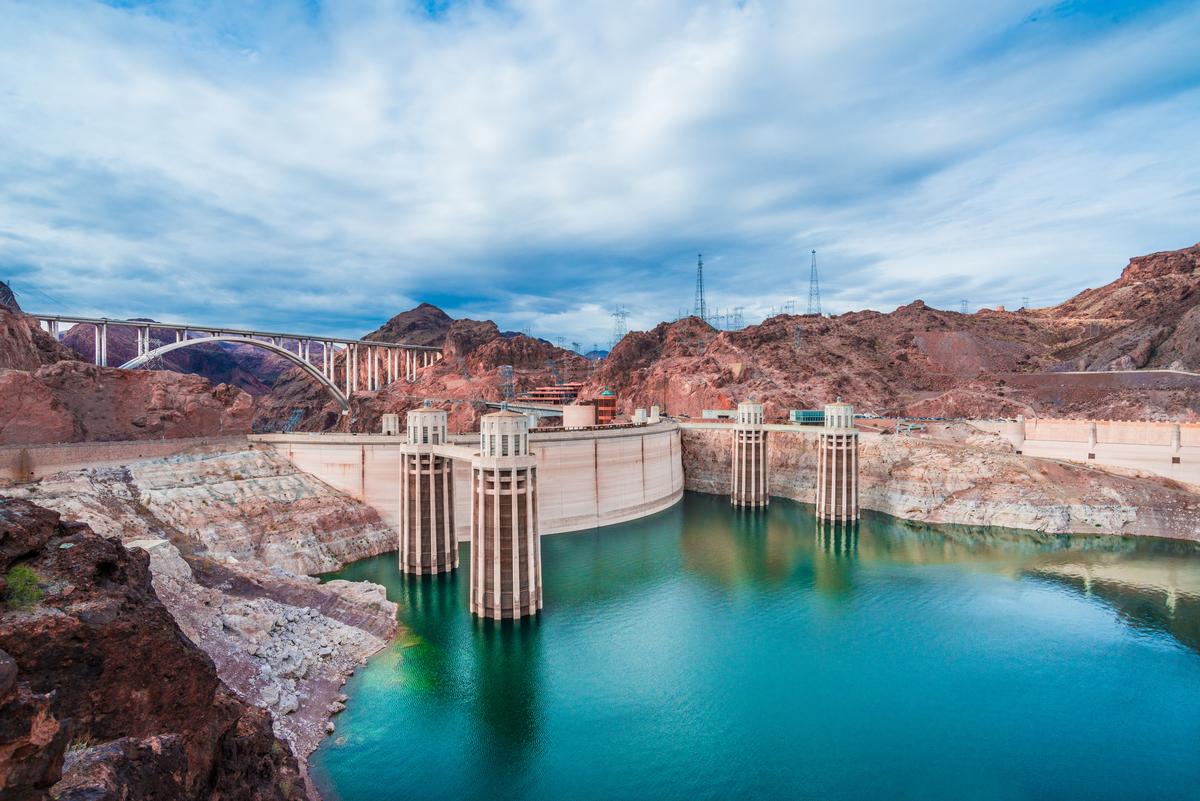
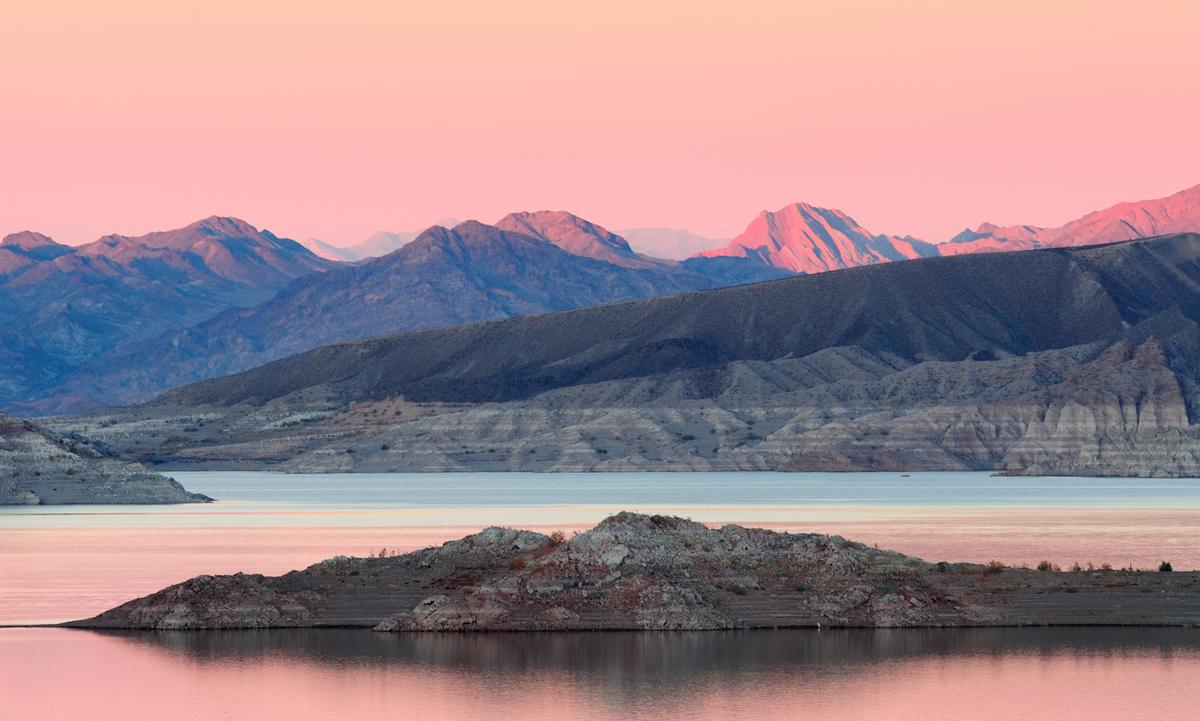
5. Lake Mead National Recreational Area
Lake Mead National Recreational Area is an enormous desert playground for outdoor enthusiasts and nature lovers. Surrounded by a stunning landscape comprised of towering mountains, cacti-filled desert basins, and vertical-wall canyons, you can enjoy an endless variety of water activities on Lake Mead and Lake Mojave, go for scenic drives or hikes, or enjoy horseback riding, wildlife watching, camping, or picnicking.
- Location: Map & Directions
You can spend your days canoeing, kayaking, waterskiing, wake-boarding, scuba-diving, or fishing on the tranquil lakes, and you can even explore the scenic wilderness by houseboat. You can take a trip down the Black Canyon Water Trail on a guided kayaking expedition or choose a thrilling Black Canyon Raft Tour.
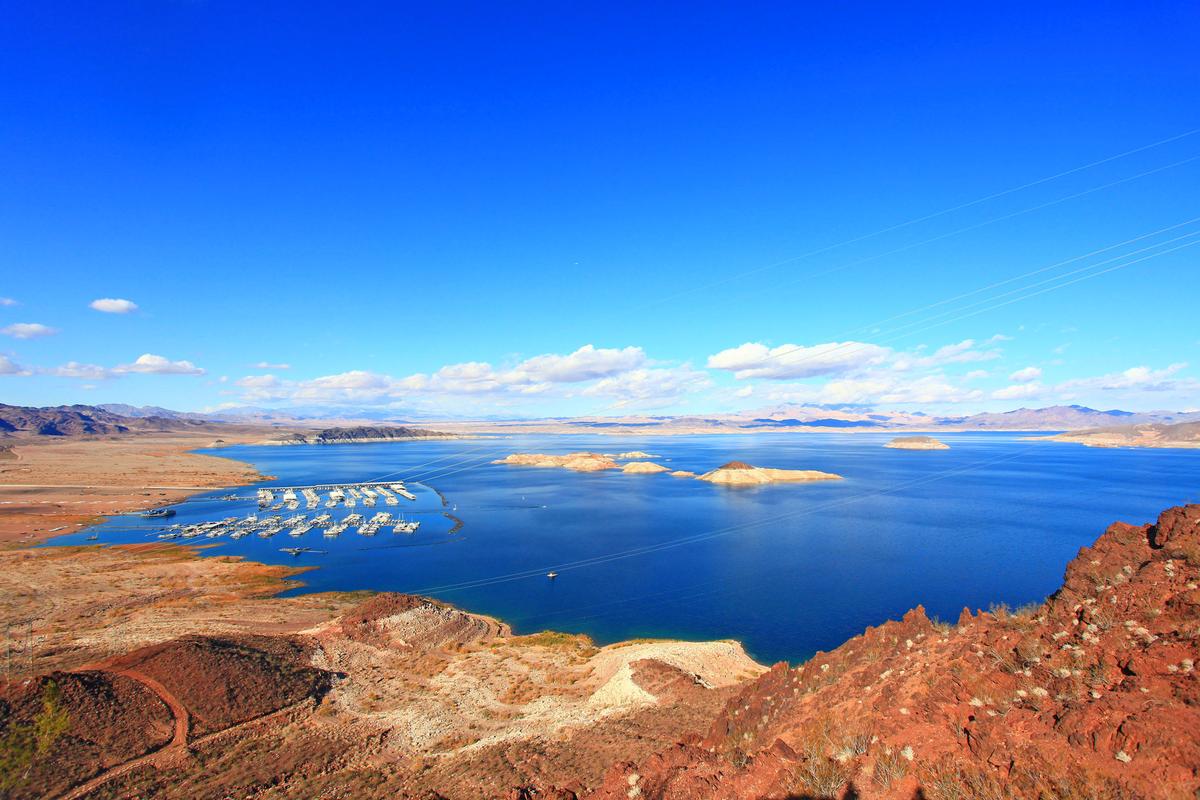
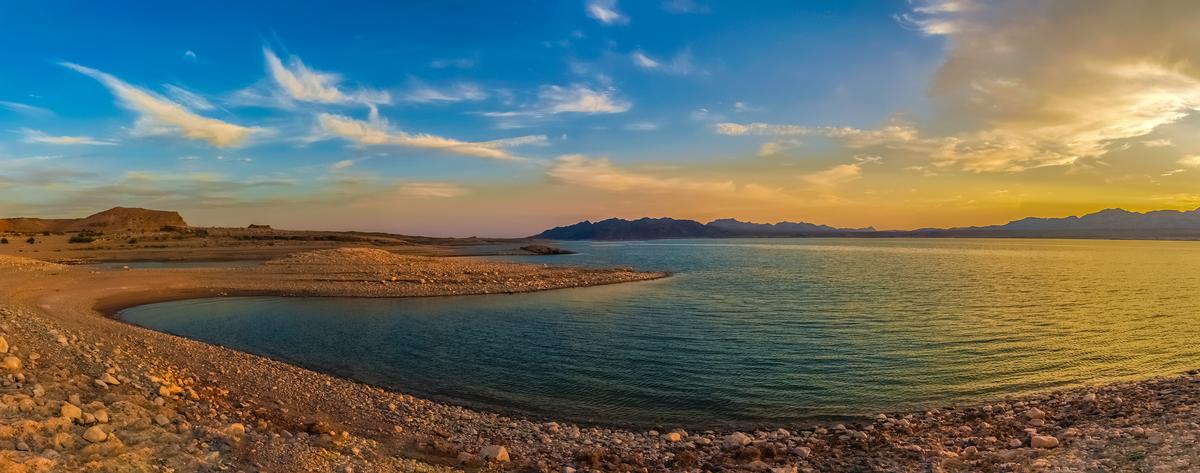
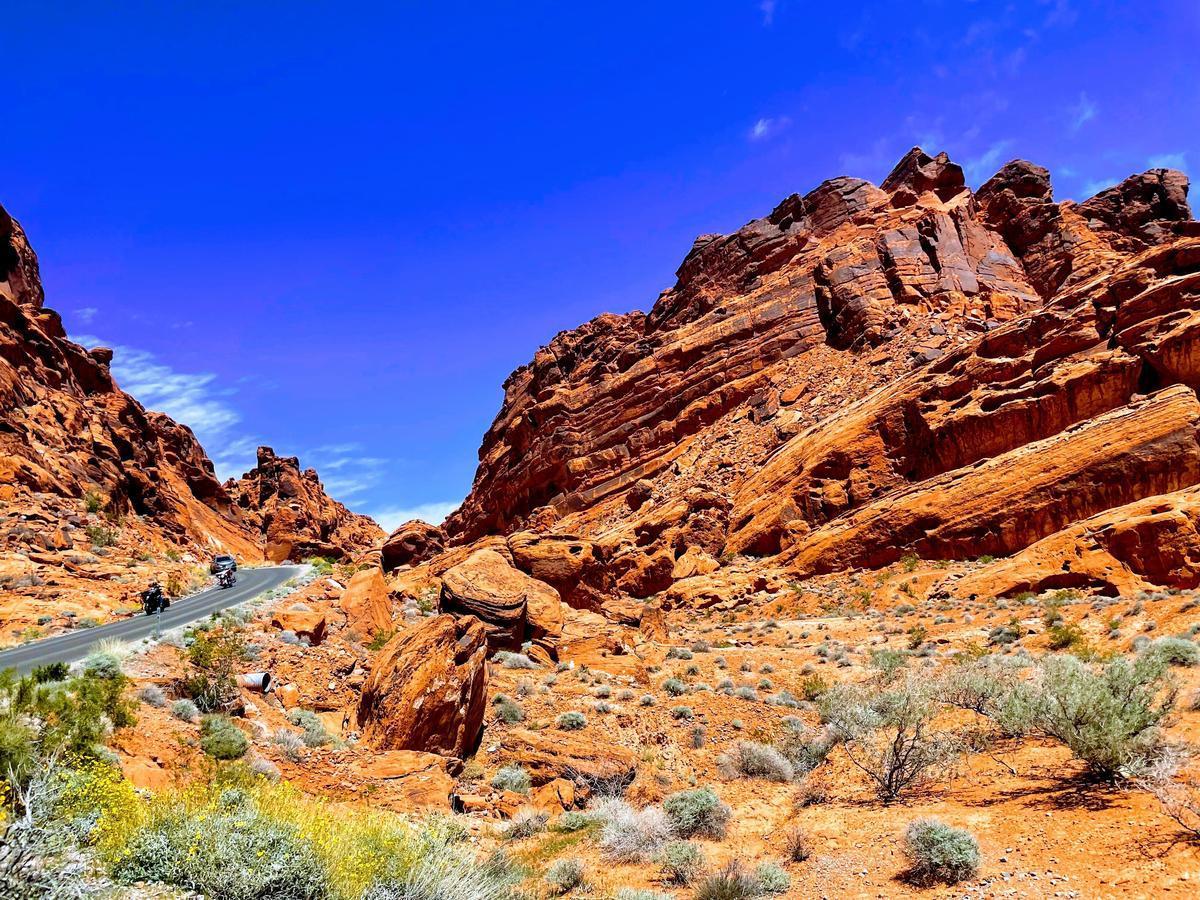
6. Valley of Fire State Park
Valley of Fire State Park is one of the most spectacular places I’ve ever visited in Nevada, and it completely won me over with its vibrant landscapes. Just about an hour northeast of Las Vegas, it feels like stepping into a dream world made of glowing red sandstone, unusual rock formations, and endless desert views.
It was about an hour’s drive northeast of Las Vegas (55 miles) to Valley of Fire State Park, which spans 40,000 acres of brilliant red Aztec sandstone.
Driving through the park was one of my favorite parts, with every turn showing me new shapes and colors that felt magical. The road itself winds between towering cliffs, and I found myself stopping constantly to take photos because it was simply unforgettable.
Hiking here is one of the absolute best experiences. I think the best trails worth checking out are Fire Wave and White Domes showed me surreal patterns and shapes in the rocks that looked almost otherworldly. It was exciting, joyful, and so unique compared to anything else I’ve seen in Nevada.
I also loved discovering the petroglyphs carved into stone by ancient peoples. Standing in front of those markings gave me chills—it was unusual and powerful to connect with history in such a raw desert setting. To me, it was one of the most meaningful highlights of the park.
Whether it’s for a romantic day trip, a family adventure, or simply a chance to see nature at its most vibrant, Valley of Fire State Park is an exceptional getaway. The colors, the magic, and the quiet beauty of the desert make it one of Nevada’s coolest and most unforgettable treasures.
- Location: Map & Directions
Local tip: Many of the park's trails are closed annually May 15 - September 30. That's because it gets very hot out in the desert.
Places to Visit Near Reno and Lake Tahoe
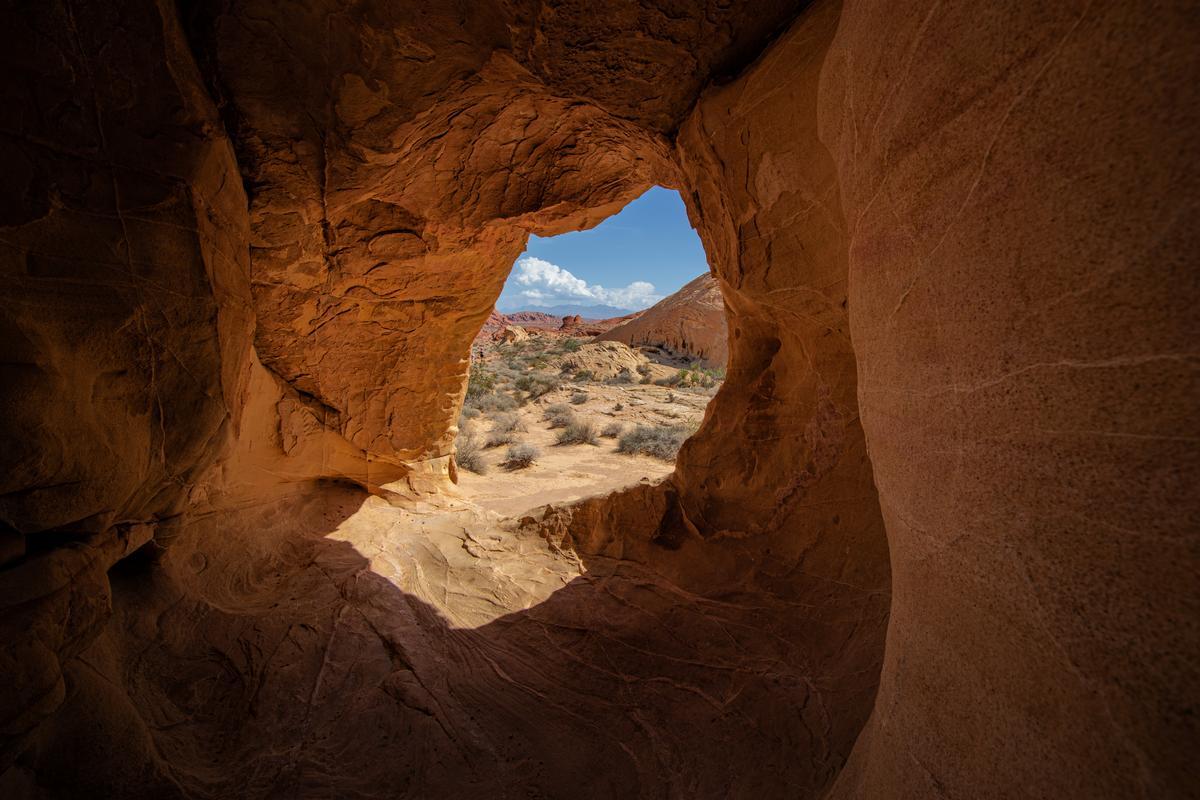
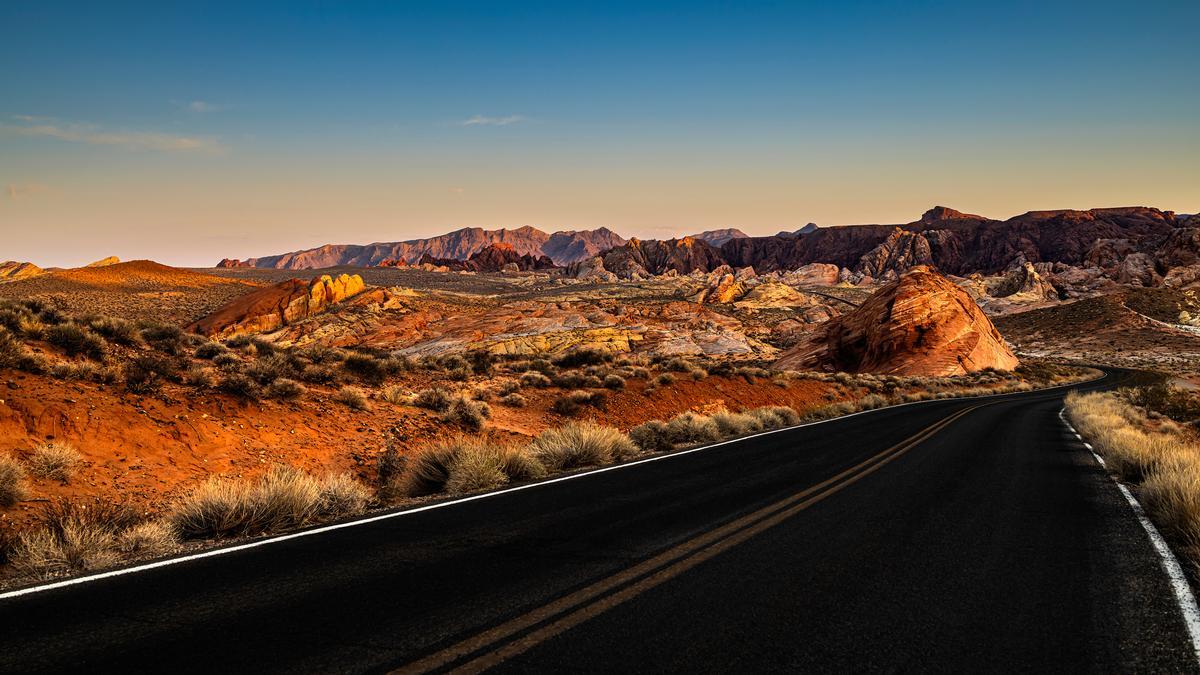
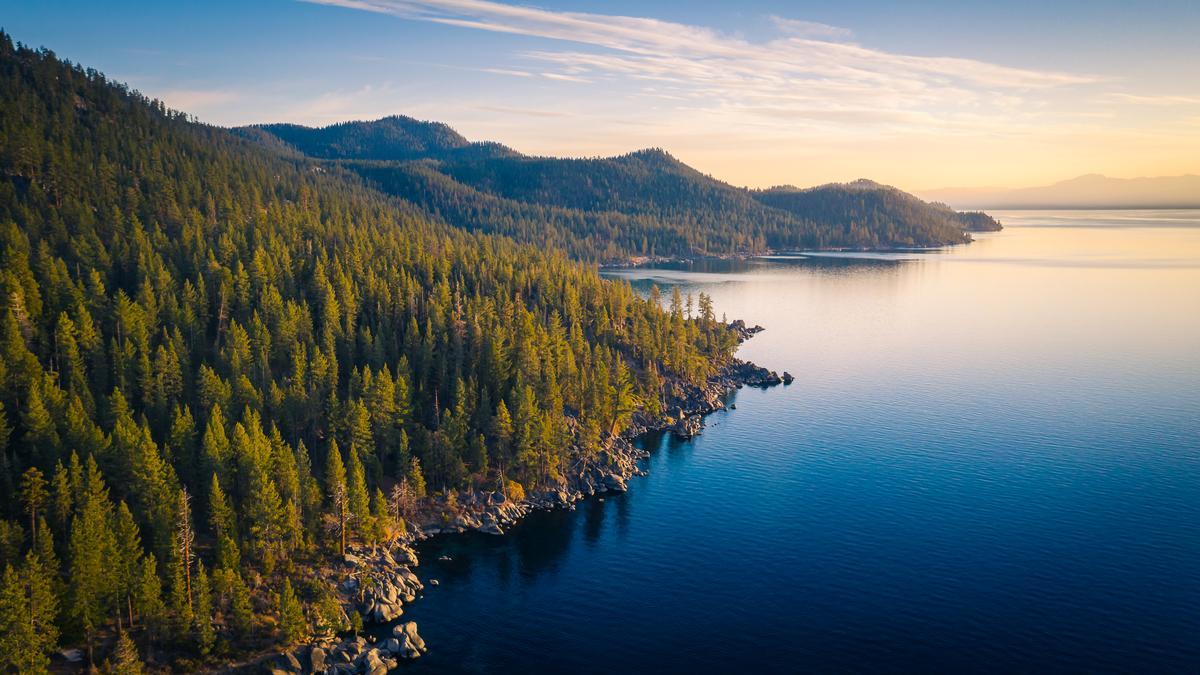
7. Lake Tahoe: Sky-Blue Water and Mountain Calm
Lake Tahoe is without a doubt one of the absolute best places to visit in Nevada, and every time I see it, I feel like I’ve stepped into a spectacular dream. Sitting right on the Nevada–California border, its surrounded by the Sierra Nevada mountains, and the mix of blue water and snowy peaks is truly unforgettable.
From Reno, we drove about 40 minutes (33 miles south) to Lake Tahoe’s north shore. The lake itself is massive, 22 miles long, 12 miles wide, and 1,645 feet deep (second-deepest in the U.S.). I spent the morning at Tahoe City’s Gatekeeper’s Museum ($5 entry), which covers Washoe Tribe heritage and Tahoe’s early tourism. Later, we walked the paved Tahoe City Lakeside Trail (2 miles round trip) with endless lake views.
One of my favorite things to do here is is just soak up the views along the shoreline. The lake changes colors with the light, and it feels magical to watch the water shift from deep sapphire to sparkling turquoise. I’ve never seen anything quite as vibrant and unique in the West.
In the summer, I loved kayaking and paddleboarding in the crystal-clear water—it was both joyful and exciting to be right out on the lake. There are also affordable beaches like Sand Harbor on the Nevada side, which I think are some of the coolest spots to relax and swim.
For best places to stay, check out my post Romantic Weekend Getaways in Lake Tahoe.
Winter, though, makes Lake Tahoe feel like a whole new adventure. Skiing at places like Heavenly or Diamond Peak gives you some of the most amazing mountain views. It turned a simple weekend getaway into a thrilling, family-friendly trip.
- Location: Map & Directions
What makes Lake Tahoe so exceptional is how it offers something for everyone—romantic sunsets, unusual hiking trails, vibrant casinos on the Nevada side, and spectacular year-round scenery. For me, it’s not just a lake, it’s one of Nevada’s most unforgettable and exciting experiences.
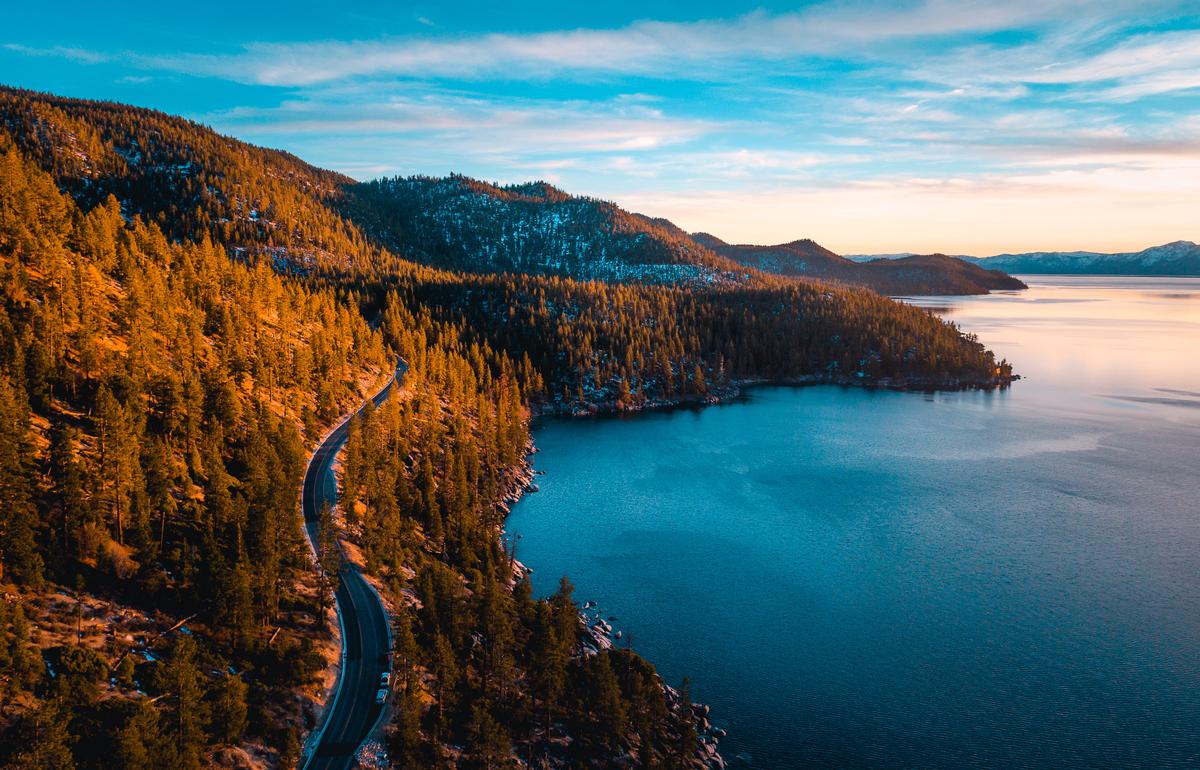
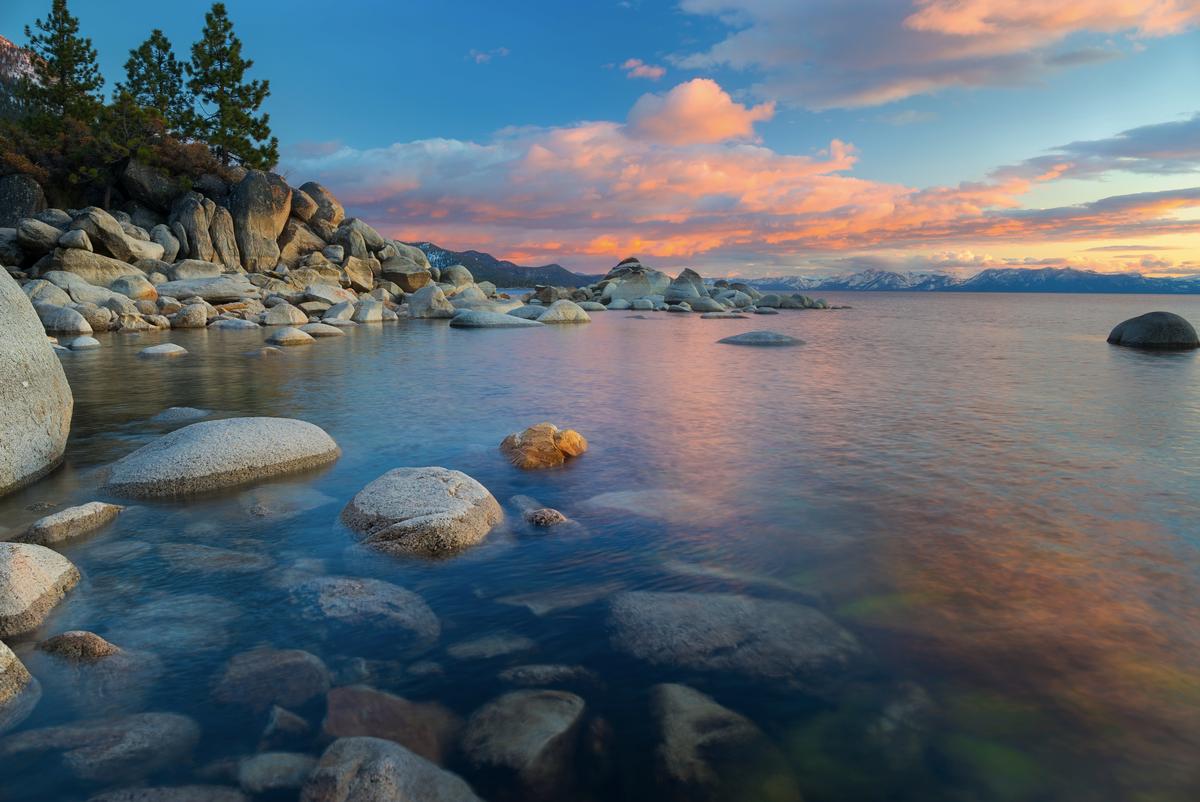
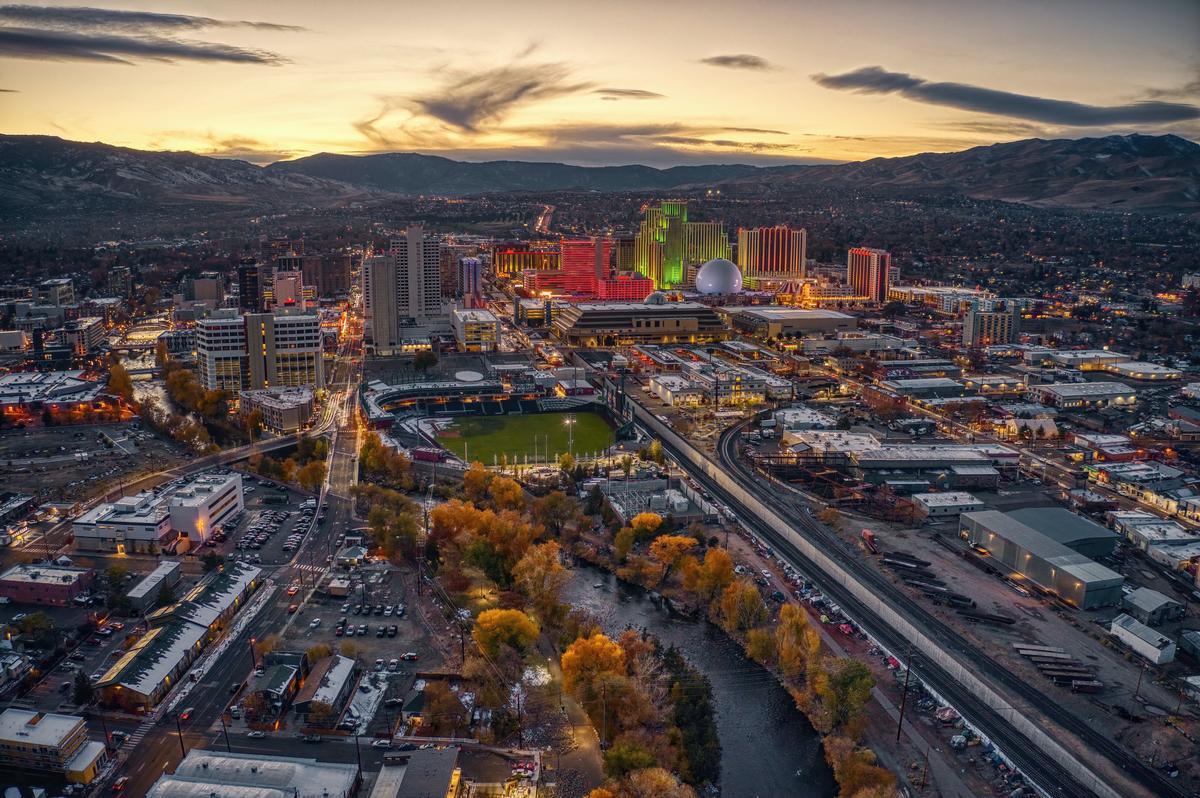
8. Reno: A Quieter Kind of Buzz
I like to start and end my trip in Reno while exploring the northern regions of Nevada. I think it's one of the best places to visit in Nevada. Why? First off, nestled near Lake Tahoe and the Sierra Nevada mountains, it’s the perfect mix of urban energy and outdoor beauty.
We drove 2 hours 15 minutes from Sacramento to Reno. It's 7 hours from Las Vegas if you decide on a longer road trip (yes, Nevada is large!) and checked into Eldorado Reno for two days.
One of my favorite things about Reno is how easy it is to find hidden gems downtown. The Riverwalk District is the best things to do in Reno, filled with art, coffee shops, and a joyful atmosphere that makes every stroll exciting. I think it’s one of the most underrated spots in the state.
Breakfast at local cafés like Two Chicks (their pancakes are amazing!) always makes me happy, and I found places that serve fresh, affordable meals that feel like the best way to start the day before exploring. It’s unusual how Reno balances cozy local vibes with the thrill of casinos and nightlife just a few steps away.
One of the absolute best discoveries for me was the Nevada Museum of Art. It’s not huge, but it’s unique, inspiring, and full of creative energy. Every corner felt like a brilliant idea brought to life, and it added a thoughtful side to my weekend getaway.
- Location: Map & Directions
Of course, the coolest part is how close Reno is to Lake Tahoe, just a 50 minute drive. I loved that I could spend the morning enjoying the city and the afternoon surrounded by spectacular mountain views. For me, Reno is an exciting, underrated gem that combines culture, adventure, and magic in one unforgettable place.
Check prices at Whitney Peak Hotel, another solid option for an overnight stay.
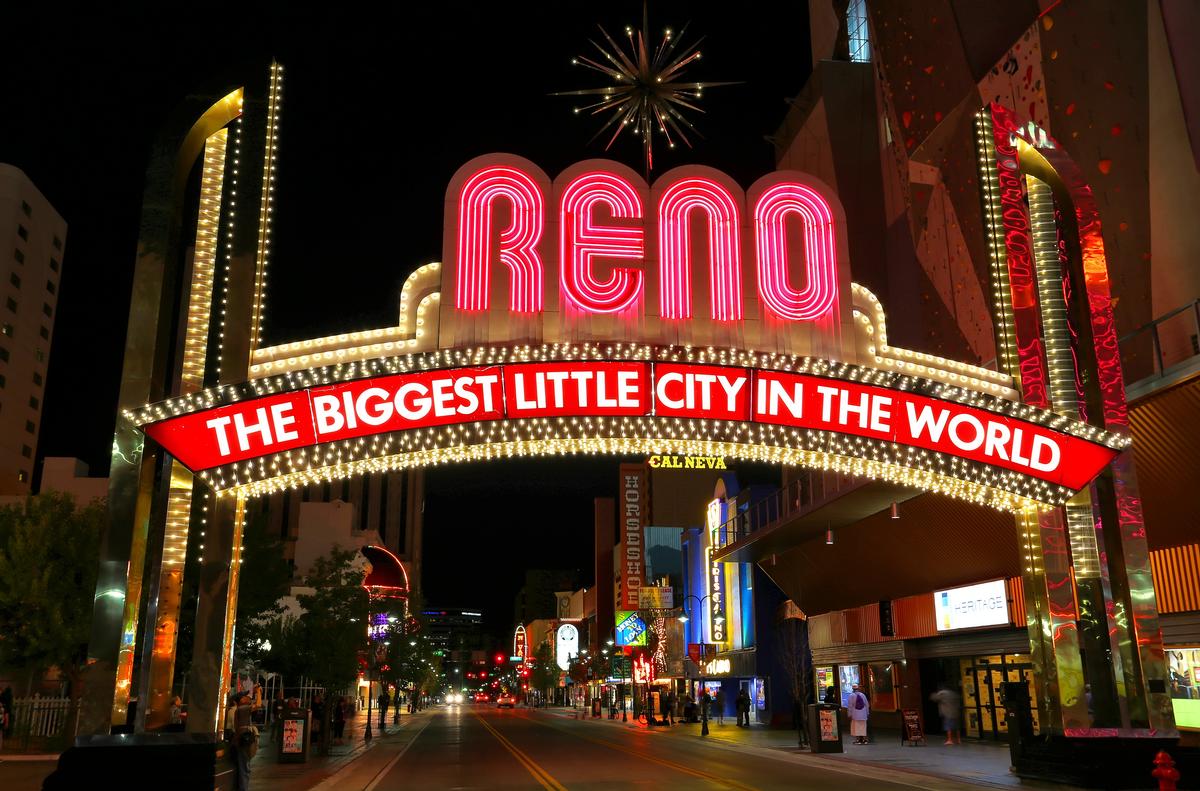
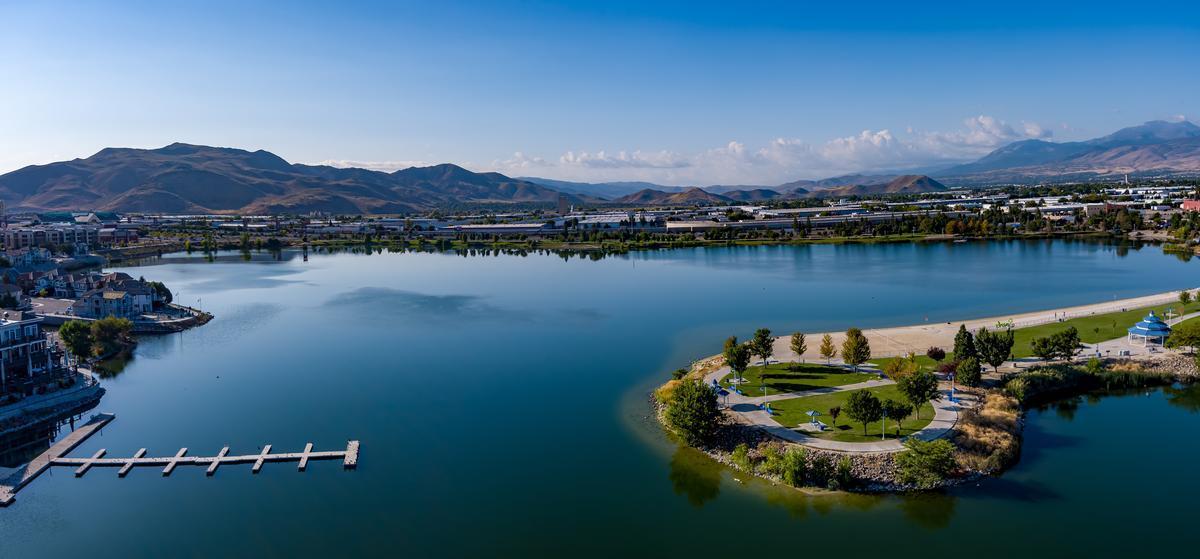
9. Sparks: Low-Key Lakes and Local Flavor
Sparks, Nevada has quickly become one of my favorite places to explore, and I love how it blends small-town charm with exciting energy. Just east of Reno, it’s close enough to the Sierra Nevada mountains and Lake Tahoe to make weekend adventures easy, but it also has plenty of cool things to do right in town.
The drive from Reno to Sparks was hardly a drive at all, just a few minutes east along I-80 (about 4 miles), though Sparks itself has grown into a city of more than 110,000.
One of the absolute best spots in Sparks is Victorian Square. I loved walking through this vibrant area filled with restaurants, cafés, and fun events throughout the year. Whether it’s an affordable local festival or a joyful summer concert, the atmosphere is always exciting and welcoming.
I also enjoyed checking out Scheels, which is one of the most unusual stores I’ve ever visited. It’s not just shopping—it’s an experience with an indoor Ferris wheel, interactive displays, and everything from sports gear to quirky local souvenirs. It honestly felt like a mini attraction all by itself.
My favorite outdoor escape in Sparks is the Sparks Marina. The water, sandy beaches, and mountain views make it a spectacular place to relax. Well...maybe not as majestic as Lake Tahoe, but definitely worth checking out! I spent a morning kayaking and then grabbed lunch nearby, and it felt like a joyful, affordable getaway without leaving the city.
- Location: Map & Directions
What I love most about Sparks is how underrated it is compared to Reno. With unique events like Hot August Nights for car enthusiasts (with lots of great music!), great dining, and access to Lake Tahoe just a short drive away, Sparks turned out to be an exciting stop in Nevada.

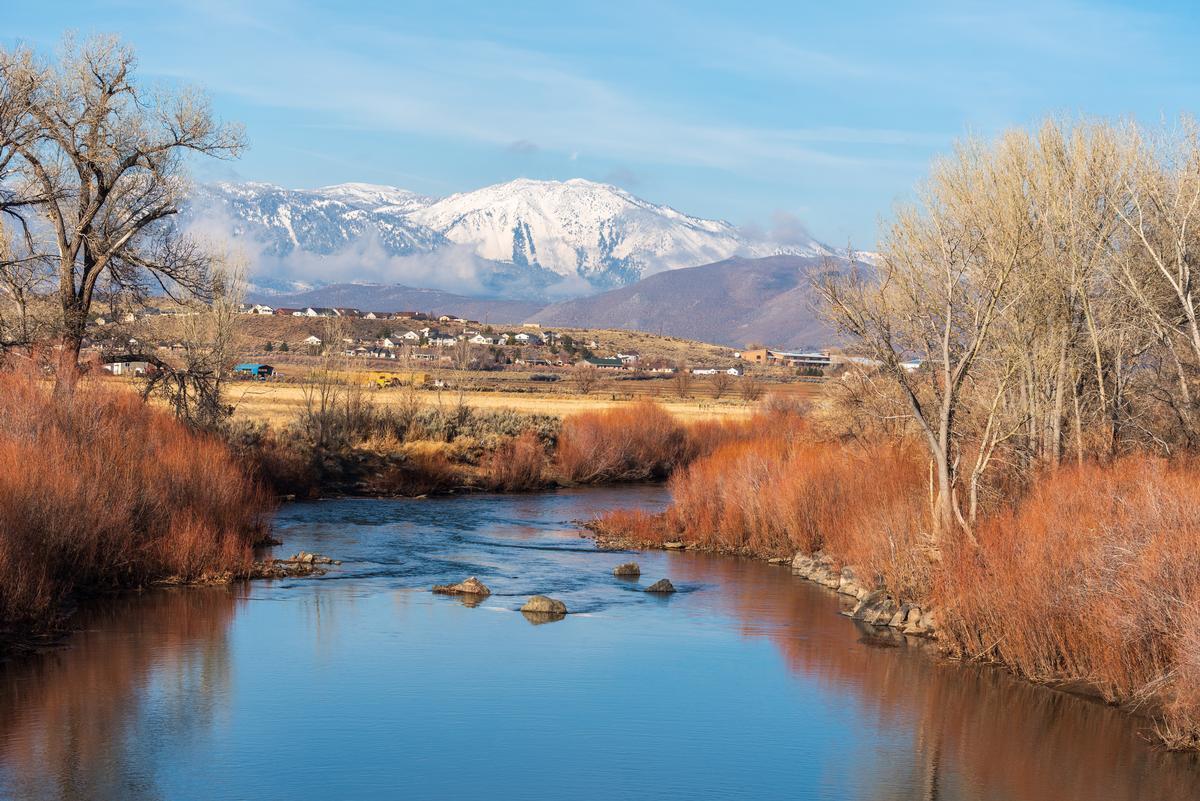
10. Carson City: Nevada’s Underrated Capital
I know you know but just to remind you, Carson City is the capital of Nevada (not Las Vegas!). Carson City has always felt like one of Nevada’s most underrated gems. I was struck by how much history and charm it holds. Nestled near Lake Tahoe and just 35 minute south of Reno, the state capital blends small-town vibes with big stories, and I think that makes it one of the coolest weekend getaways.
My favorite part of exploring Carson City is walking around the historic downtown. The streets are lined with Victorian-style buildings, local cafés, and a joyful atmosphere that feels both welcoming and unique. It’s unusual how a capital city can feel so laid-back, but that’s the magic here.
I loved visiting the Nevada State Museum, which is right in town and built inside an old U.S. Mint. Seeing exhibits about silver mining and the Old West made me feel like I was stepping back in time, and it’s one of the best places to understand Nevada’s heritage. It was both exciting and educational in a way I didn’t expect.
- Location: Map & Directions
Another highlight for me was the Nevada State Railroad Museum. Watching the old trains roll by felt spectacular, and it’s the kind of unusual, family-friendly attraction that makes Carson City so memorable. It’s one of those spots that’s just as fun for kids as it is for adults.
And the coolest part? Carson City is so close to Lake Tahoe and Virginia City that you can easily turn it into a weekend adventure. For me, Carson City is a hidden treasure where history, culture, and natural beauty all come together in the most exceptional way.
Check prices at Plaza Hotel Carson City.
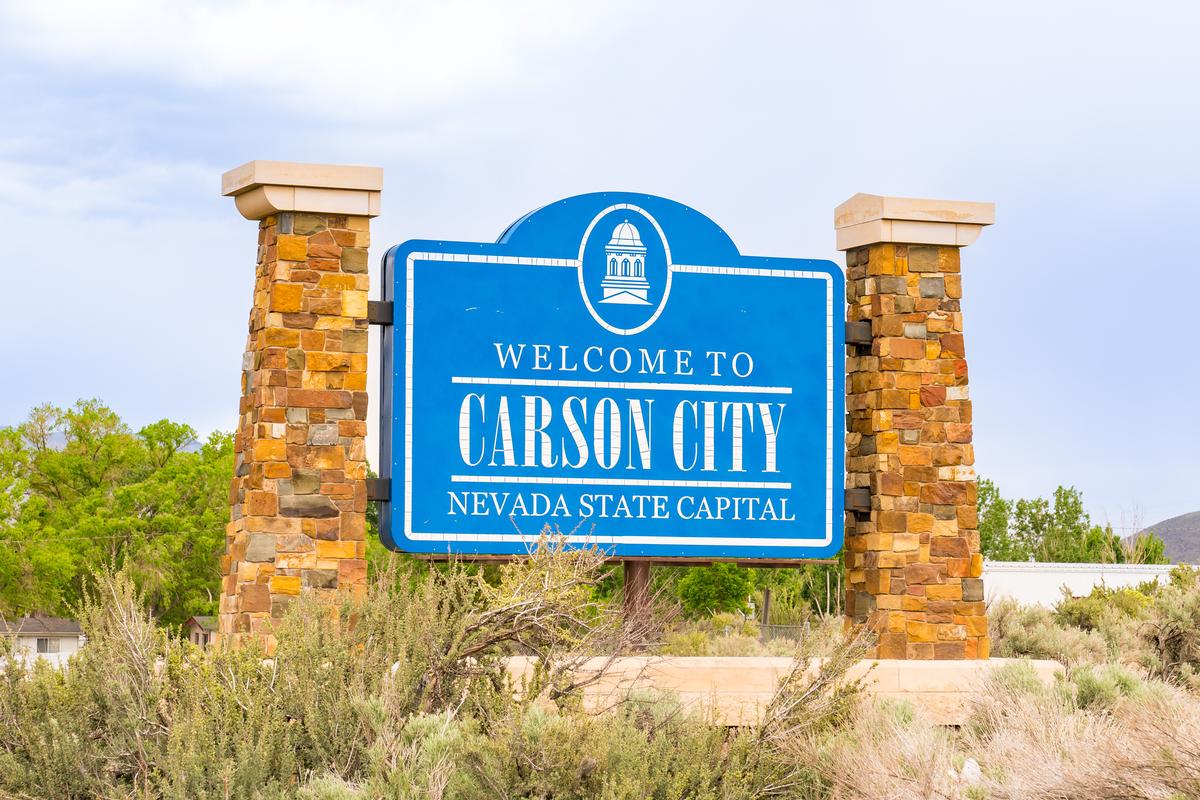
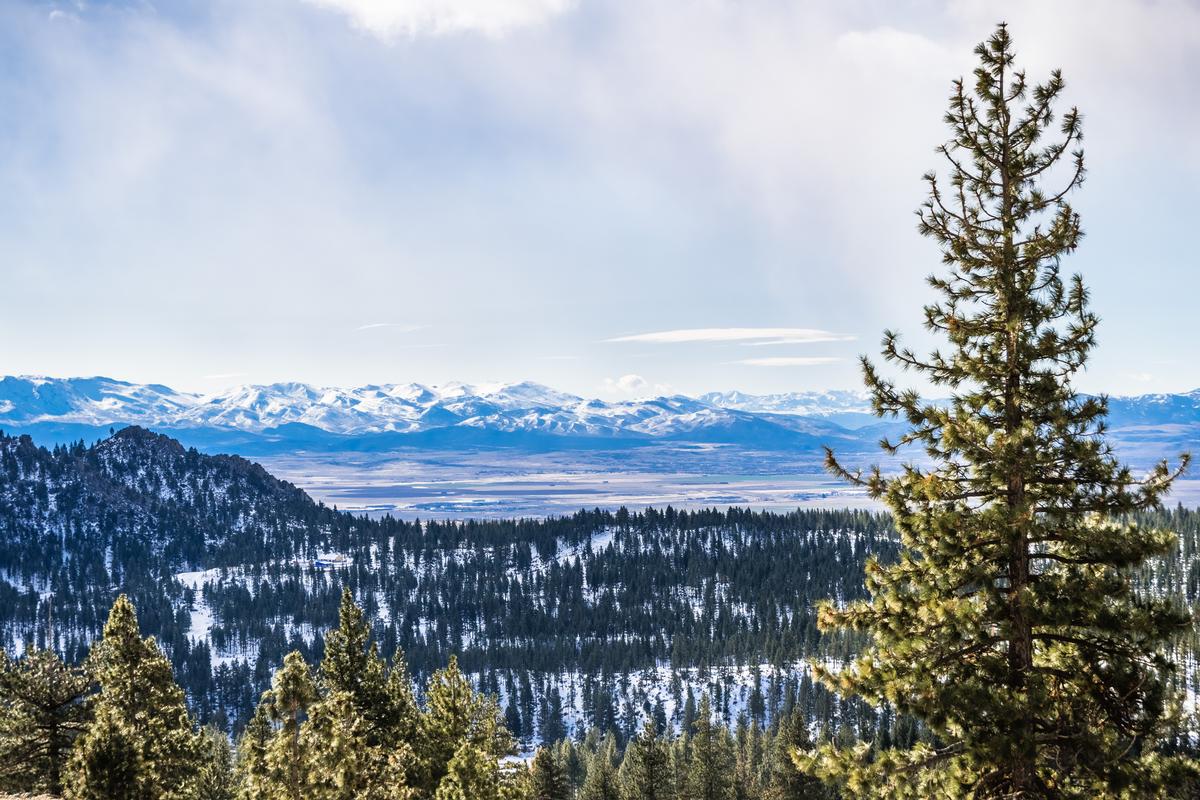
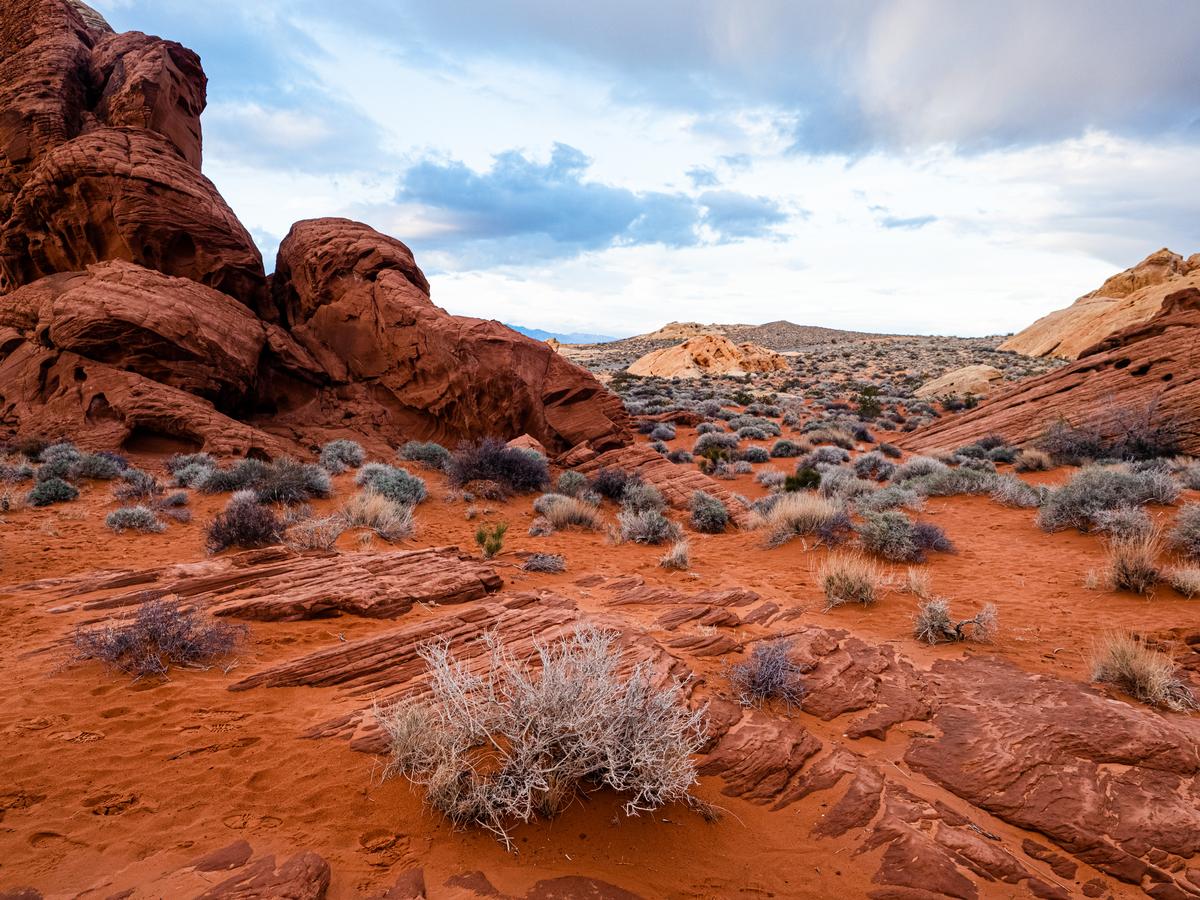
Conclusion
Looking back at all these incredible destinations I realize Nevada is filled with some of the coolest and most unique places to explore.
Each city, park, and hidden corner offers its own joyful surprises, whether it’s history, adventure, food, or simply stunning views.
For me, the absolute best part is how Nevada combines vibrant city life with peaceful outdoor escapes, making it perfect for a weekend getaway, a romantic trip, or a family adventure.
No matter where I go in this state, I always find something spectacular, memorable, and truly unforgettable.
Booking Checklist
1. Book Your Flight - I use Expedia because I like their mobile app with my itinerary. They've helped me re-book flights on many occasions. Once you reach their Gold tier, support is especially good.
2. Book Your Hotel - I use Booking.com or Expedia, depending on my destination.
3. Book Your Rental Car - I use Expedia.
4. Book your tours on Viator or Get Your Guide.
5. If you are planning to visit more than three national parks in the next 12 months, buy the America the Beautiful Pass.
